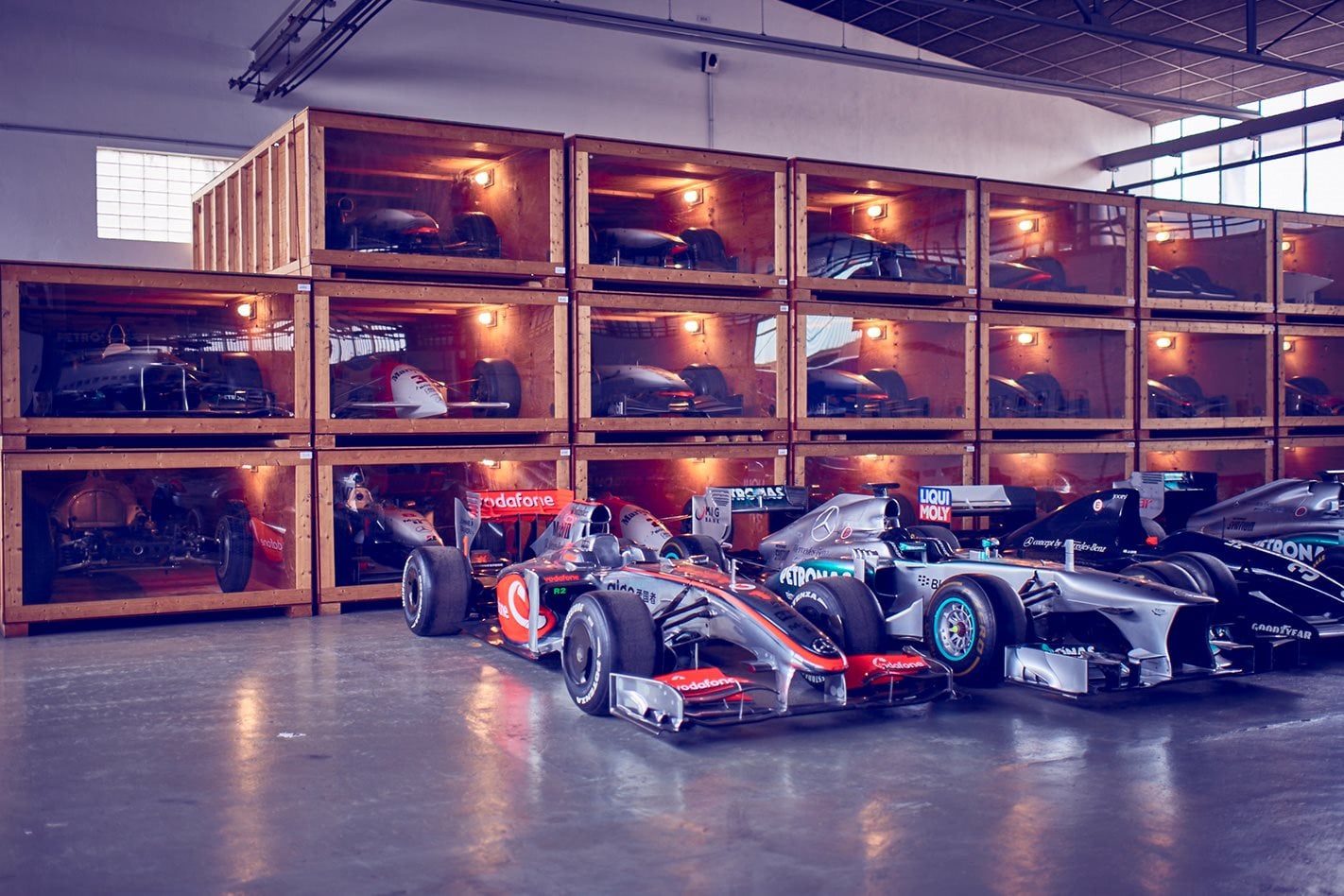CURATOR Holger Lützenkirchen gazes at the faded pictures that line the walls, disappearing into the half-light at the end of this vast hall. He’s looking at ghosts and legends; long-passed Mercedes factory pilots, some with arms crossed defiantly, chins jutting, others smiling diffidently at the camera.
There’s Rudolf Caracciola, sporting a cravat, and Bob Burman wearing a giant jewel-encrusted crown. Christian Lautenschlager eyes the lens knowingly over his luxuriant moustache and a then relatively unknown Ayrton Senna stares ahead over the wheel of his 190E at the Nurburgring in ’84, minutes away from bursting onto the world stage.
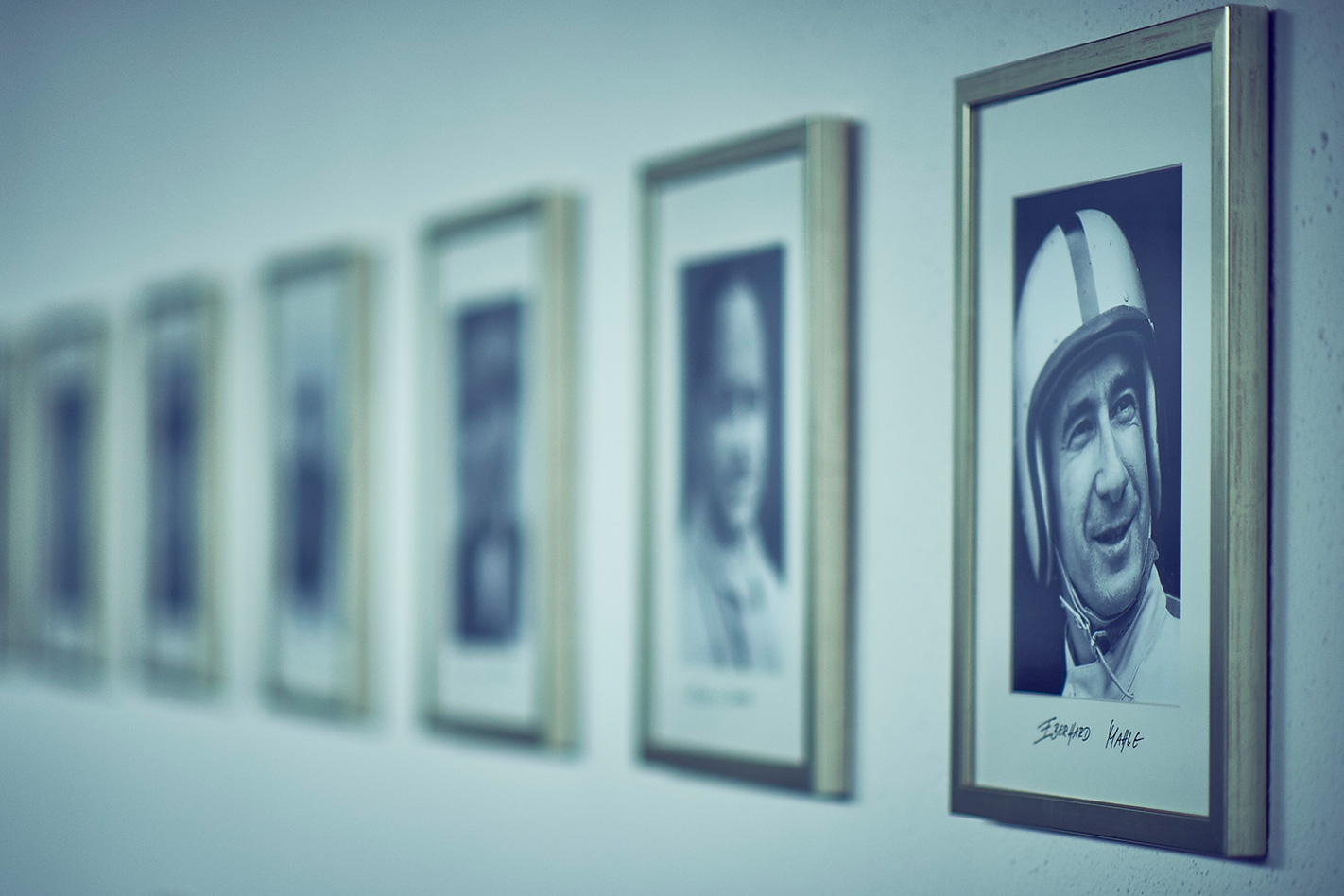
Below the pictures sit row after row of competition cars; Le Mans prototypes, DTM cars and, in the distance a wall of Formula One cars sealed into airtight glass-fronted hutches as if they’re in a Japanese capsule hotel. Lützenkirchen waves expansively, and then mutters quietly: “We are running out of heroes.” He explains that nobody can drive some of these cars anymore. Those with the talent to do so can’t be insured to drive many of the more extreme competition cars in this hall. So the cars sit here, in this nondescript building, hidden in plain sight in suburban Fellbach.
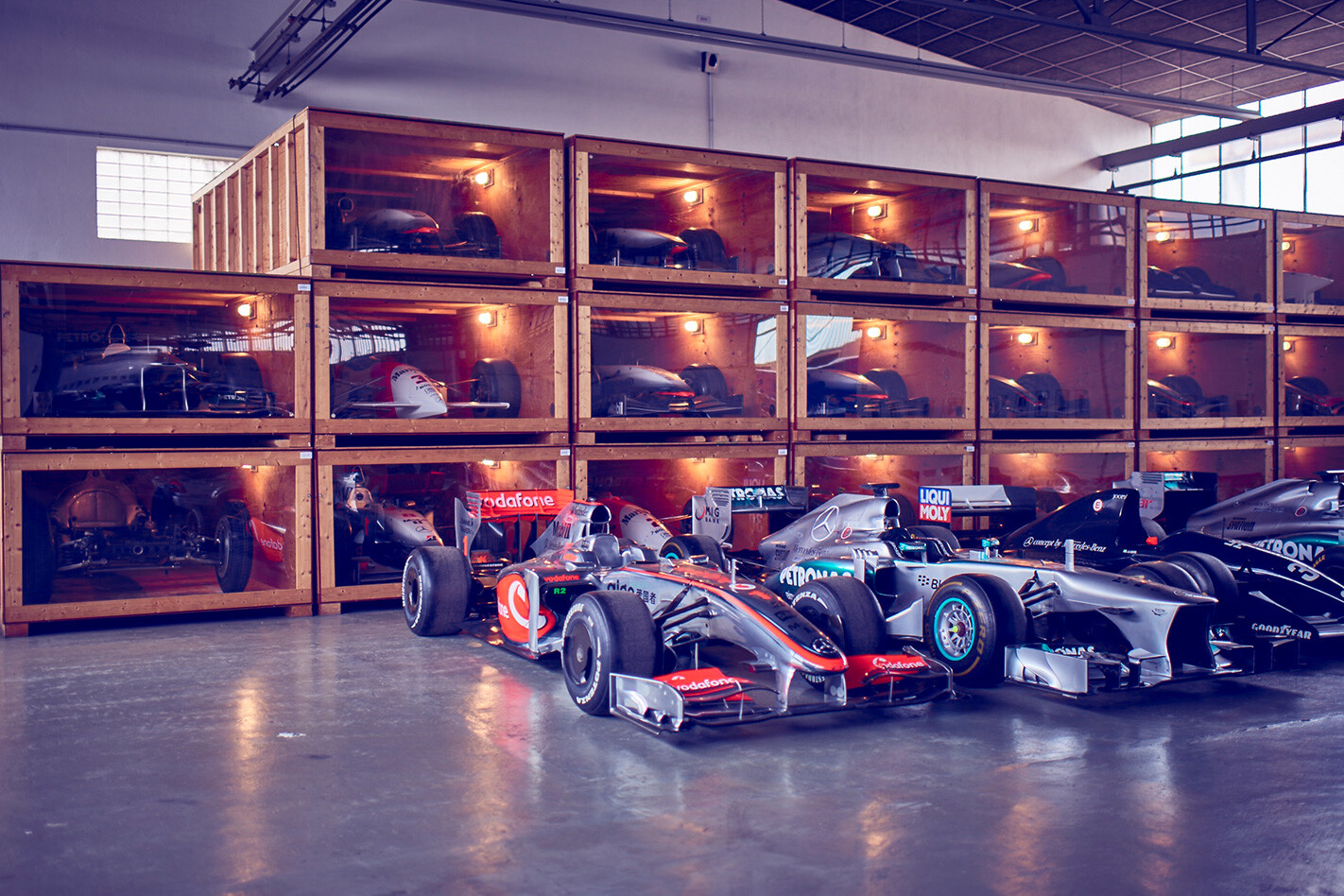
The Holy Halls are Mercedes’ crown jewels. Dotted about this unassuming north-eastern suburb of Stuttgart are 12 industrial units, unremarkable from the outside. Lützenkirchen asks us not to take any photographs with our phones because it’s possible that the geodata from the images could be used to pinpoint exactly which units house the priceless collection of cars. And priceless it is, because a good percentage of its contents are completely irreplaceable. In all there are 1176 cars here and that number grows all the time, the company assiduously saving the final example of every model’s production run, in its most typical guise, to slot into the collection.
The majority of cars that enter the collection now won’t be shown in the public museum for two or three decades. “It’s a generational investment,” admits Lützenkirchen. “The cars I put in here, I will never see in the museum, and the cars I see in the museum, I didn’t put in here.”
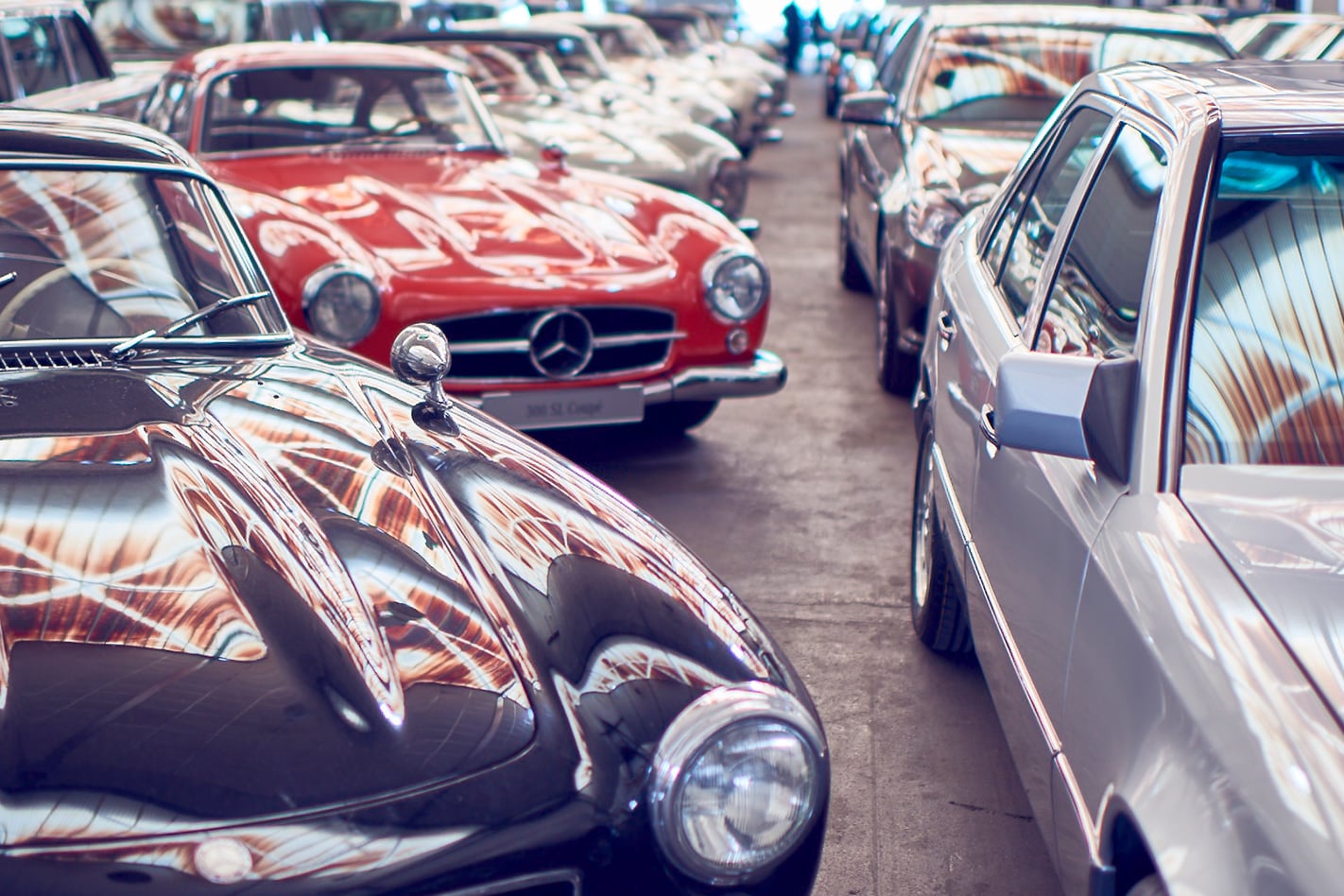
The collection stretches from the very first cars in the 19th century to the modern era, and while much of Mercedes-Benz’s history is well documented, it’s the oddities, the mongrels and the forgotten test mules that fascinate me. Who knew there was such a thing as a Mercedes SL 400 CDI diesel? Or that it was only after Mehmet Ali Agca shot Pope John Paul II that bulletproof glass was introduced on Popemobiles? Even then, there’s a grim economic at work. “We have the thick B6 glass for the pope and B4 glass for the driver,” says Lützenkirchen. Before we can ask why, he looks up, gives a wry smile and says: “More drivers than popes.”
The growth of the collection was put on hold after what Lützenkirchen describes as “an appointment in Poland” occurred, the cars dispersing into caves, bunkers and tunnels, with many moving east, out of the range of the RAF’s bombs. A number were sent to Dresden, only to be locked behind the Iron Curtain post-war until reunification in 1989. Even then, only 12 came back, the rest disappearing without trace.
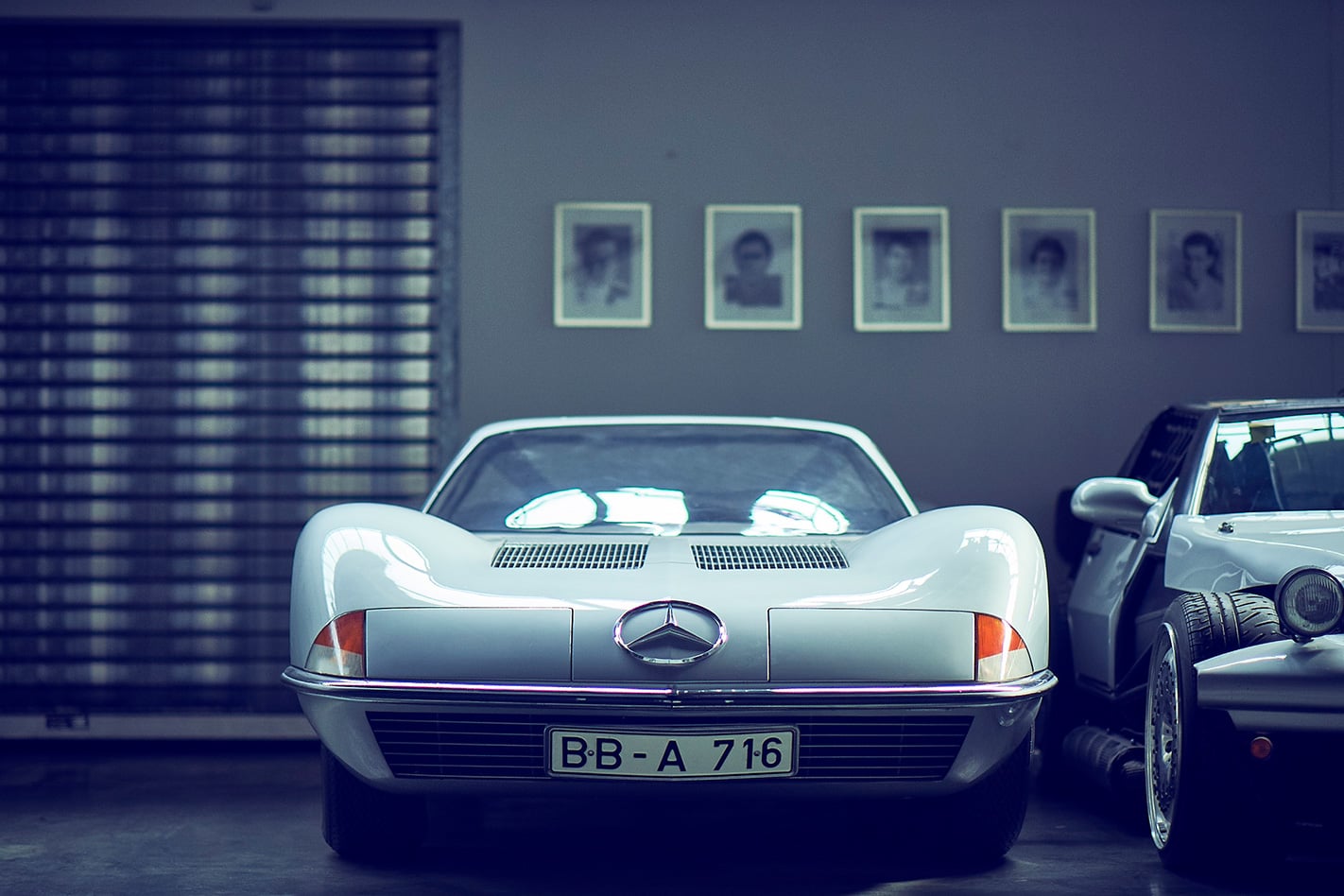
Everywhere you cast your eye, there’s something incredible. The world’s most expensive car, $135 million worth of 300 SLR Uhlenhaut coupe, sits without ceremony next to a CLK DTM car. Only two of these beautiful 3.0-litre straight-eight unicorns were ever built, the Le Mans disaster of 1955 curtailing engineer Rudi Uhlenhaut’s plans to campaign them in competition. The other sits a few kilometres across town in the gleaming Mercedes-Benz museum at Untertürkheim. This one was Uhlenhaut’s ‘company car’ for a while, the 220kW coupe able to hit 280km/h on autobahns of the day, when most contemporary cars would struggle to reach half of that figure. It must have seemed like something from another planet.
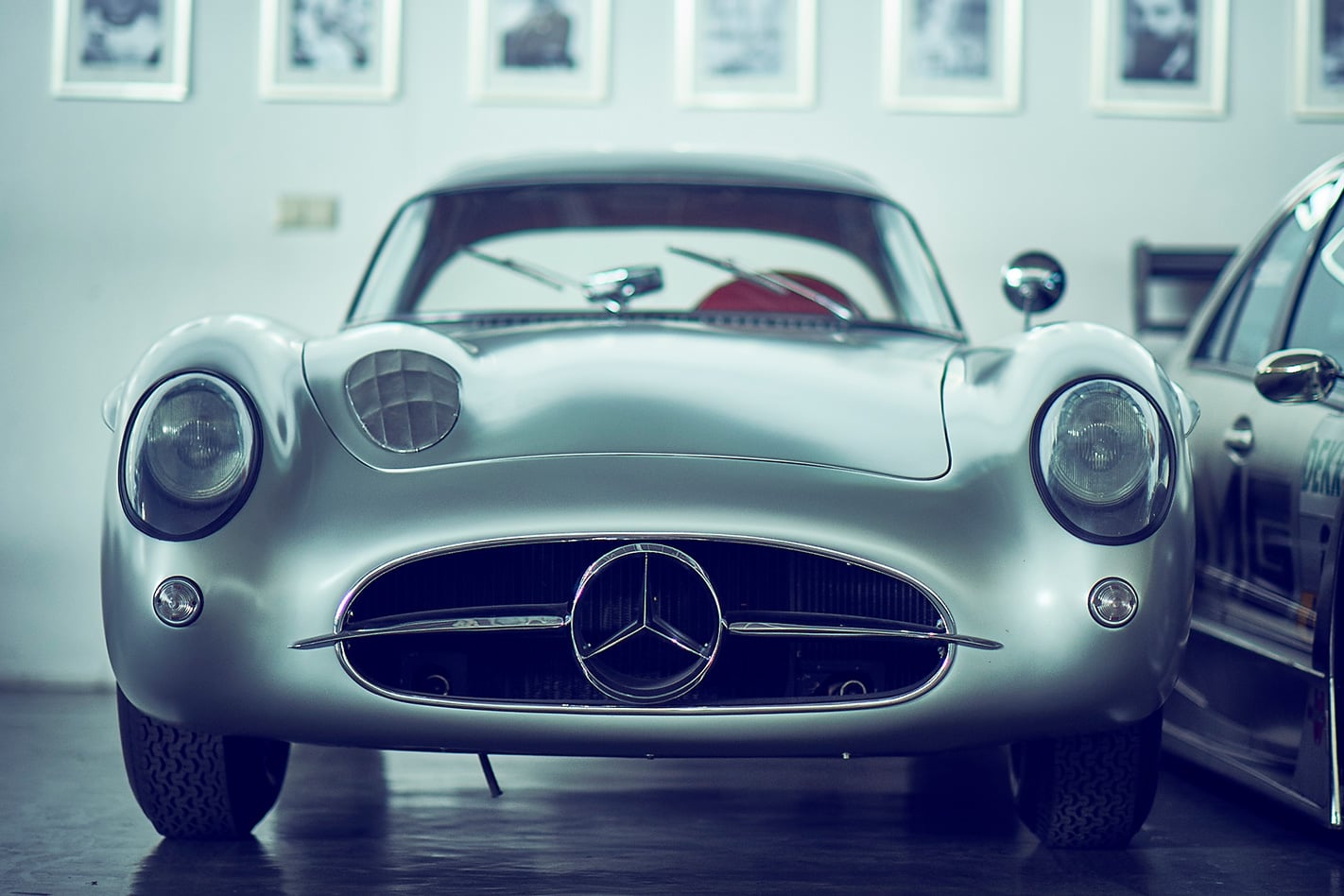
“You see that S-Class? Arnold Schwarzenegger,” grins Lützenkirchen pointing at a silver W140 with some gaudy gold detailing. He’s a goldmine of information, some of which is spectacularly nerdy. He’s an expert on how paints break down and tells stories of how the drying of oil paints was once the major bottleneck in vehicle production and how nitrocellulose paint spraying solved all that, itself a by-product of World War I bomb technology.
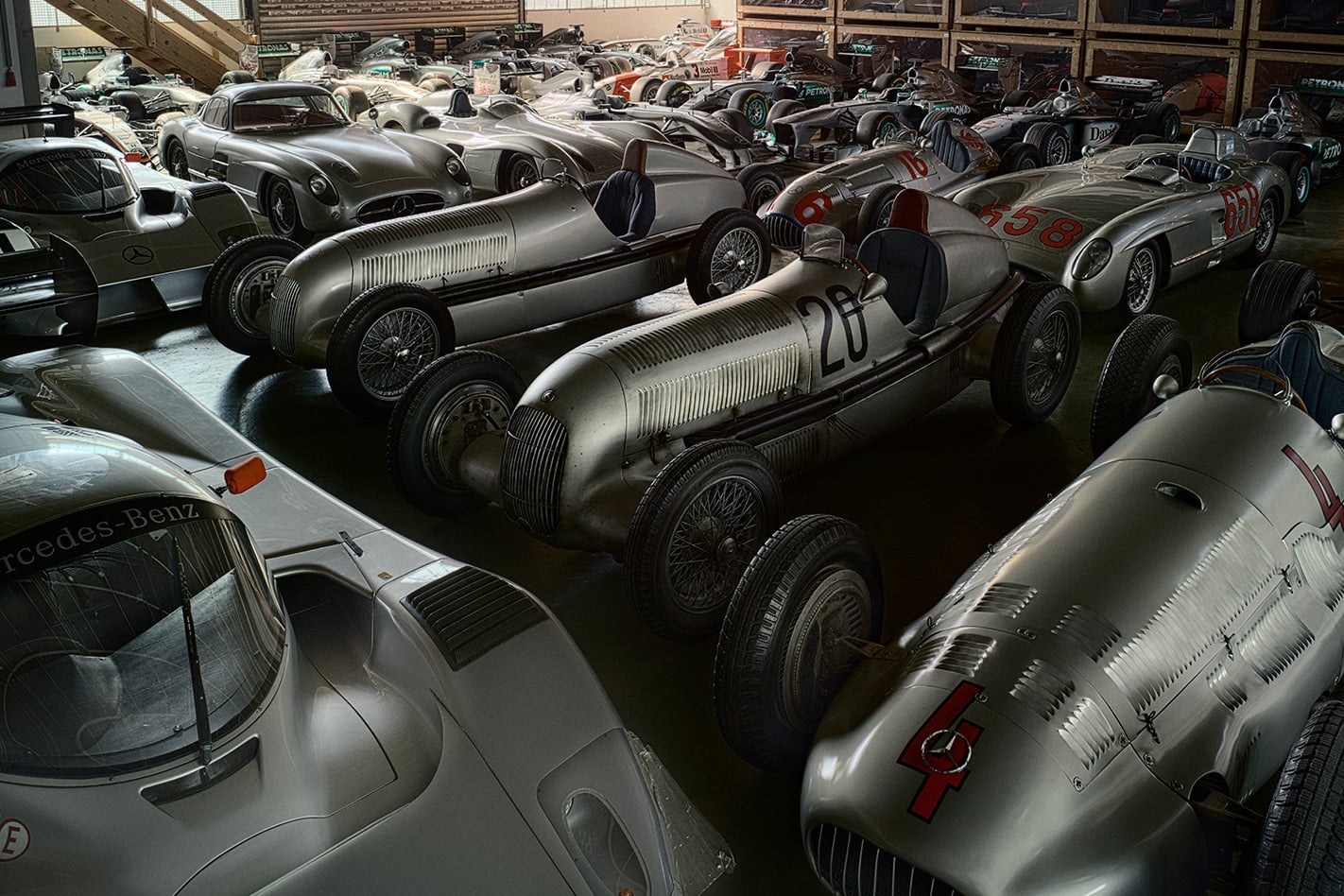
“This is a 1935 Bosch Diesel Einspritzpumpe,” he announces. “This is the first diesel.” Then a moment of contemporary introspection. “Bit difficult at the moment,” he shrugs. He flicks the lights on in the next hall, the sweet tang of seasoned engine oil hanging in the air. “Benz on one side, Daimler on the other until 1926. Best thing Deutsche Bank ever did,” he proclaims on the merger.
All of the halls are heated to 20 degrees Celsius with 50 percent humidity. Moths can be an issue and many of the cars have moth guards on the dash. “We used to keep them under covers, but it was no use,” admits Lützenkirchen. “Then we tried cooking the cars at 50 degrees to kill the eggs. That works but…” he trails off gazing across the huge expanse of cars. It’s a leviathan task. Fuel, coolant and hydraulic fluids are drained out of the cars as these agents are too aggressive for long-term storage. Unless a car really needs to turn its engine over, it doesn’t.
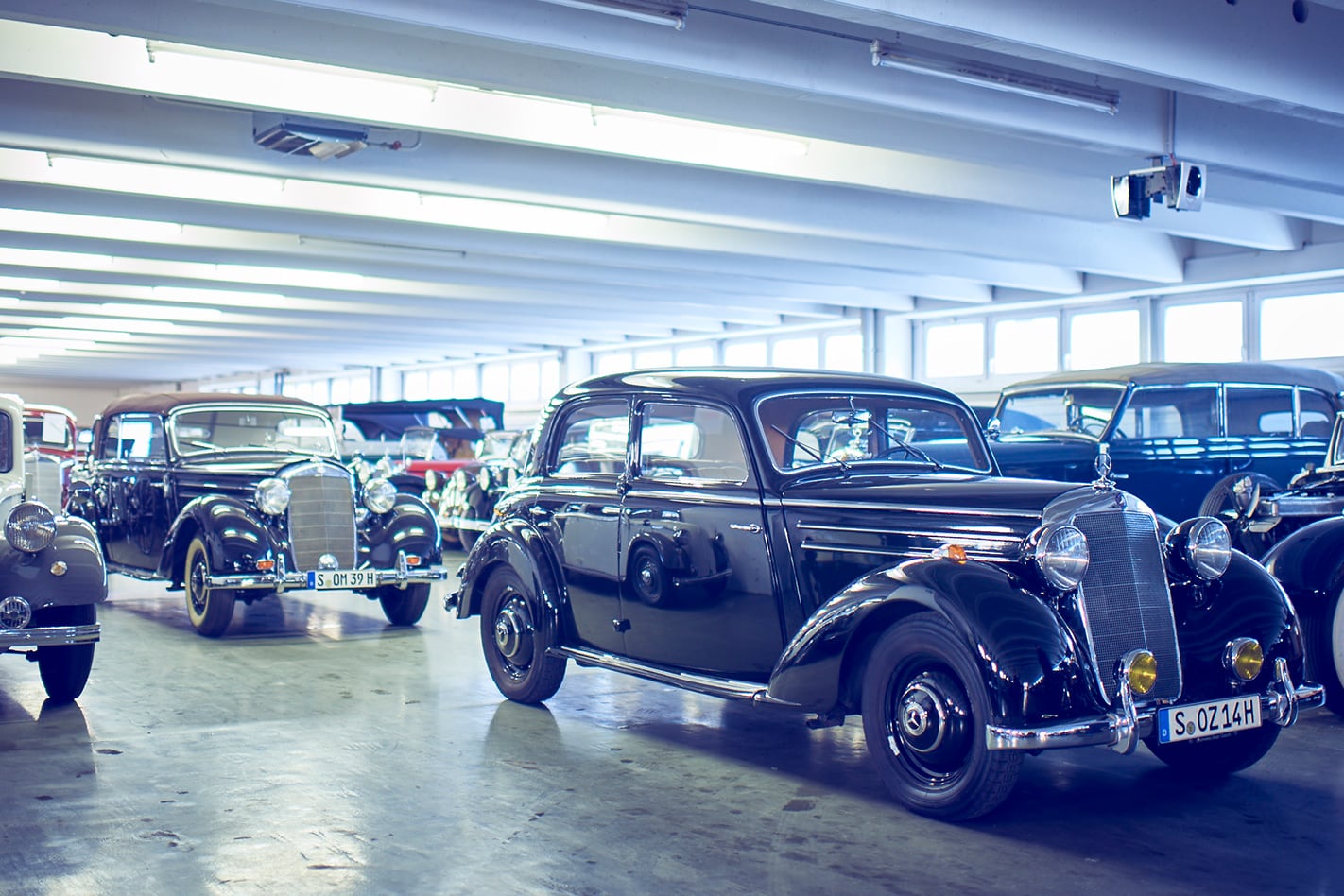
“The most difficult thing to maintain are the electronics,” says Lützenkirchen. “We thought it would be the plastics or rubber parts but we can easily get those fabricated. Same goes for wheels and tyres. The electrics are hard though. Capacitors dry out. We have to try to manufacture everything. Imagine trying to get spare parts for a 1980s stereo,” he says. “Some of the competition cars we need three laptops just to start them, then we need the software and the batteries. A laptop from 1998 isn’t easy to source. Fifteen years after the last car left the belt, the factory stops supplying spares. Then it’s up to us. Very expensive.” A separate building holds every tool required to maintain every one of the 1176 cars.

It’s hard not to be drawn to the 14 examples of C 111 (of a total of 16 produced) that dot the halls. None are identical, this mid-engined experimental vehicle going through numerous guises, with V8 petrol engines, five-cylinder diesels and two-, three- and four-rotor Wankels. It’s just part of the design legacy of Bruno Sacco, which encompasses everything with a three-pointed star between 1974 and 1999. His favourite design was the W210 190, and the world’s most valuable 190 is undoubtedly Ayrton Senna’s gold 190E 2.3-16 that he campaigned at the Nurburgring in 1984.
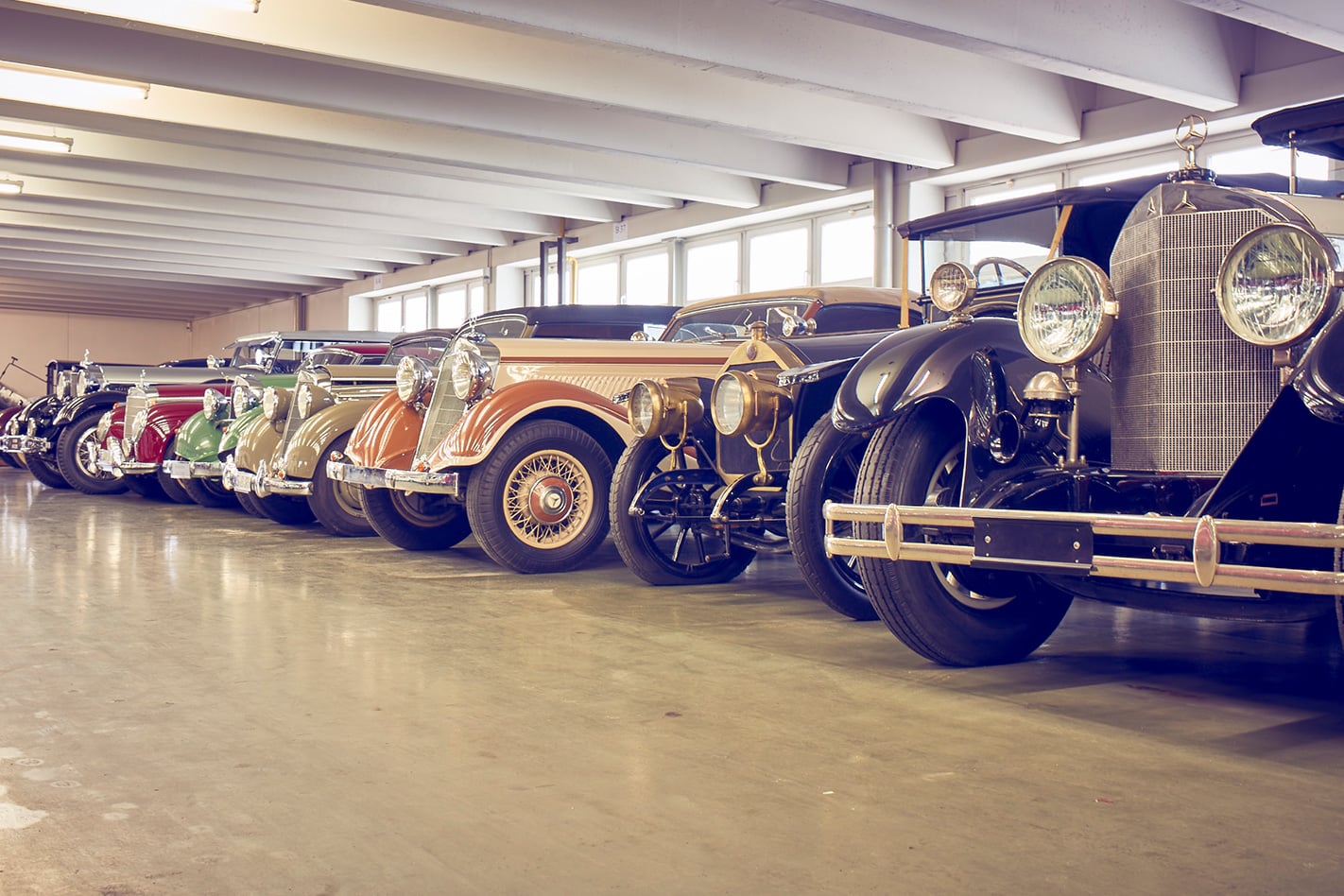
An F1 rookie with the unfancied Toleman team at the time, Senna took the opportunity seriously, demolishing the likes Jack Brabham, James Hunt, Alain Prost, John Surtees, Keke Rosberg, Niki Lauda and Carlos Reutemann in a spec race against the cream of Formula 1. His performance was so impressive that Surtees penned a letter to Enzo Ferrari, saying that he should hire the driver. He never did, as Senna went to Lotus and started claiming victories before moving to McLaren and dominating the sport. His 190E, still emblazoned with the bold SENNA decals on the side and sun strip, sits awaiting final detailing before being consigned to do some PR duty.
Lützenkirchen is keenly aware that the collection falls under marketing’s aegis and has to show some measure of return. “We spend the money that the guys on the belt make,” he admits. “We have to sell cars. That’s why we’re connected to marketing.” Nevertheless, he concedes that it can be hard to make that connection when some of the collection’s contents are so esoteric. He pulls the sheet off a Daimler Benz Flugmotor 603E – the engine that powers a World War II Messerschmitt ME109 fighter – that he bought from a guy at a motor jumble. “We stayed up late, got very drunk, and in the morning I offered him half a million euros for it. We are working to get it running but all the people who know these engines are dead. We only have one try at it.” He replaces the sheet reverently, adding: “We have time.”
Time is the one criterion that seeps into every consideration here. None more so than when sitting among the beautiful racing cars staring up at those ghosts in frames behind glass. Lützenkirchen sits next to me, following my gaze. “Those 227 guys on the wall, they had booked no dinner,” he says, alluding to the grim attrition rate of racing drivers in the early part of the last century. “They had a wooden steering wheel and a leather cap. No belt, no nothing.”
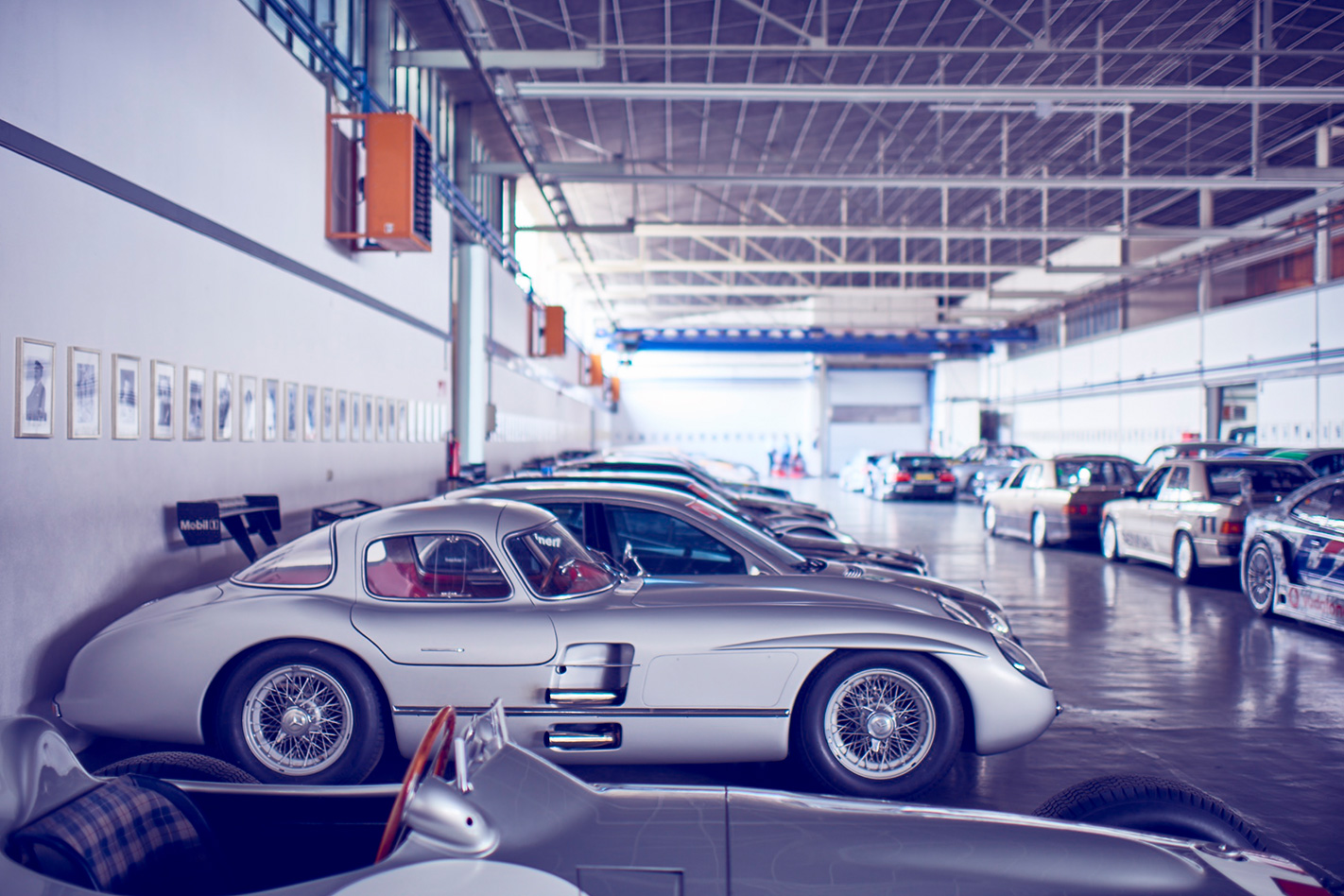
Time is a luxury these men rarely had, and it takes a little time to come to the conclusion that as incredible as the cars are, they’re just more durable icons of the dreams of incredible people; many of whom are long gone. The irony of the Holy Halls is that this astonishing commitment to preservation only serves to remind us even more poignantly of just what we’ve lost. Perhaps this weighs heavily on Holger Lützenkirchen. He looks at his watch, the face catching the light from the dusty roof-level windows. He smiles and looks over to us. “It’s okay. We have time.”



